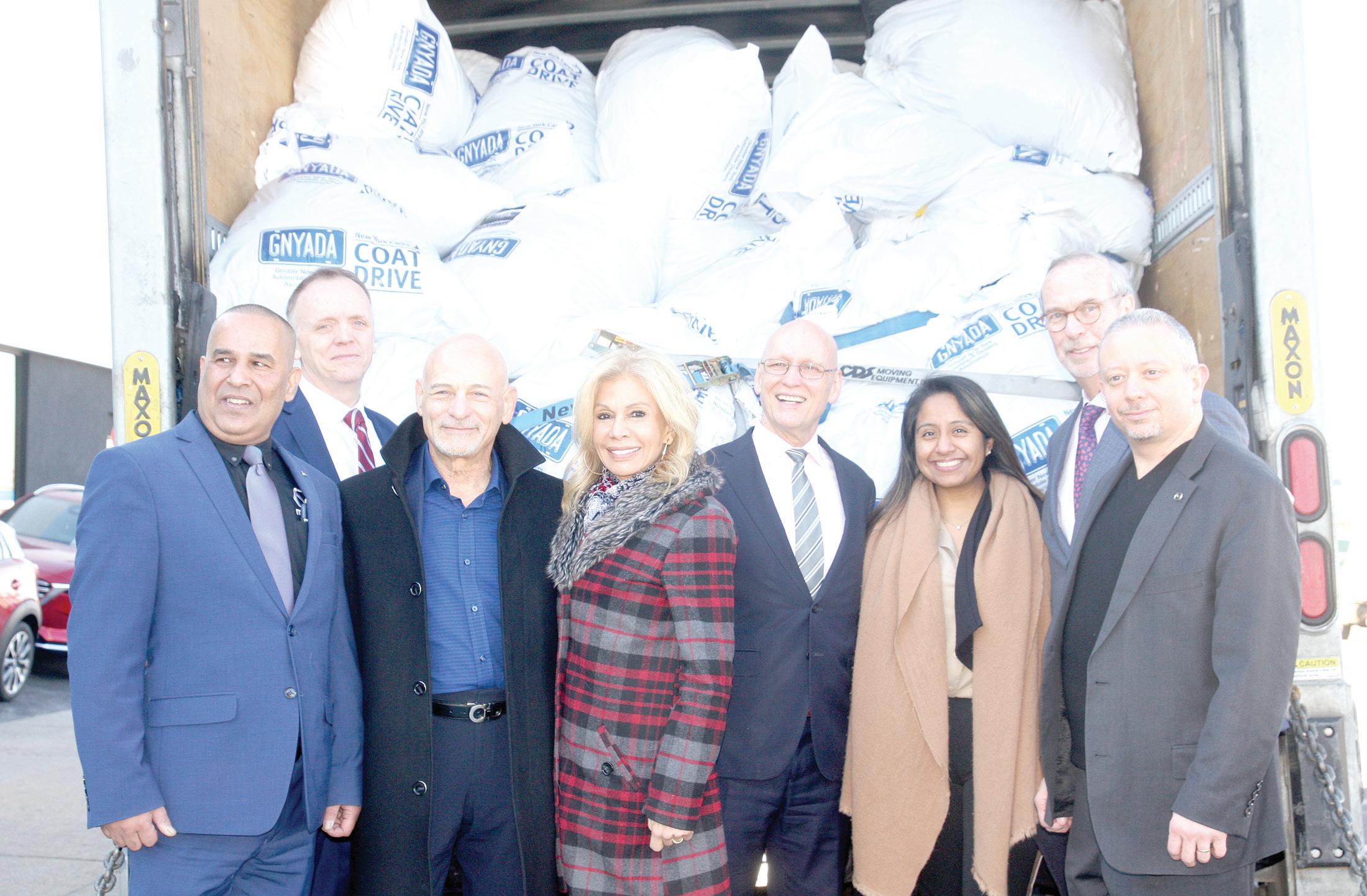
7 minute read
GNYADA Wraps Up Annual Holiday Coat Drive
QUEENS CHAMBER MEMBER NEWS
DEALERS COLLECT, DONATE WINTER COATS
BY BENJAMIN FANG
As temperatures begin to dip, a trade group representing New York car dealers donated tens of thousands of coats to New York Cares.
The Greater New York Automobile Dealership Association (GNYADA) announced on Friday that a record 195 car dealerships collected more than 90,000 coats for the drive. That represents nearly 10 percent of the total amount of coats donated to the citywide organization.
Since the car dealership association began its partnership with New York Cares in 2012, the group has donated nearly 60,000 coats for the needy, according to GNYADA president Mark Schienberg.
“The dealers, their employees and their customers each year see the importance of this cause that New York Cares has done for a long time,” he said. “It’s just so impressive to see the outpouring of compassion for people that are needy.”
Since November, dealerships have hosted collection sites in their showrooms, increasing the amount of coat donations. GNYADA is the largest multi-business group that donates coats, Schienberg said.
On Friday, the last batch of coats was loaded onto a truck parked in front of Koeppel Mazda in Jackson Heights. Koeppel collected the largest number of coats of all of the participating dealerships.
The coats were then delivered to the New York Cares warehouse in midtown for distribution.
Mark Lacher, dealer principal of Koeppel Auto Group, said the winter coat drive is something he and his team of 300 employees look forward to every year.
“It kicks off the holiday season and gets everyone in the spirit of giving,” Lacher said. “We love doing it every year.”
Gary Bagley, executive director of New York Cares, said donated coats come in batches of 50, 100 or 200, thanks to individual drives at dealerships, apartment buildings
Members of GNYADA pose in front of a truck loaded with donated coats collects at Koeppel Mazda.
and schools.
He noted that there are about 1.7 million people living at or below the poverty line in New York City.
“What we don’t want is, even if you’re not in the shelter system, we

don’t want you to have to decide between a warm meal and a warm coat,” he said. “We want to remove that need.”
The coats help children who might have stayed home without a coat go to school, and seniors pick up their prescriptions.
“We could not do this without thousands of champions who come together in this really impressive way,” Bagley said.



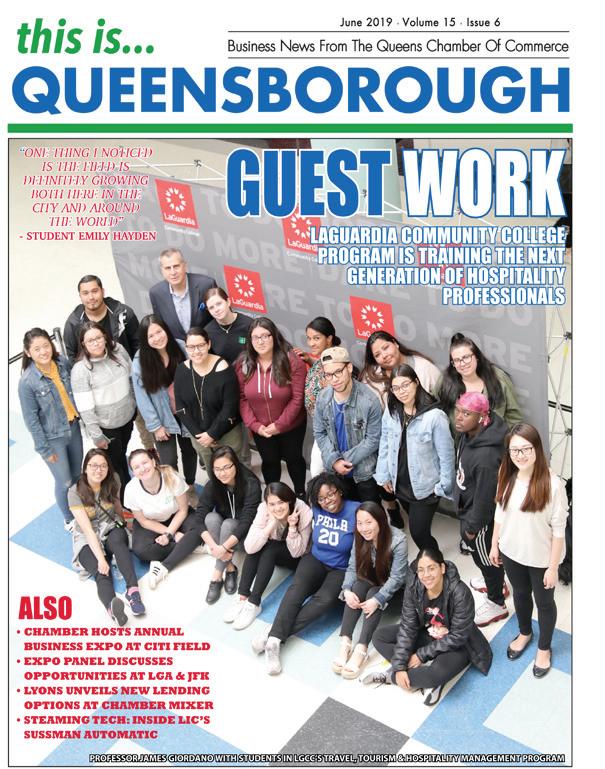

Your inside scoop straight from the business community’s top leaders the Latest on the most infLuentiaL peopLe in queens
Profiling Queens’ Most Dynamic People
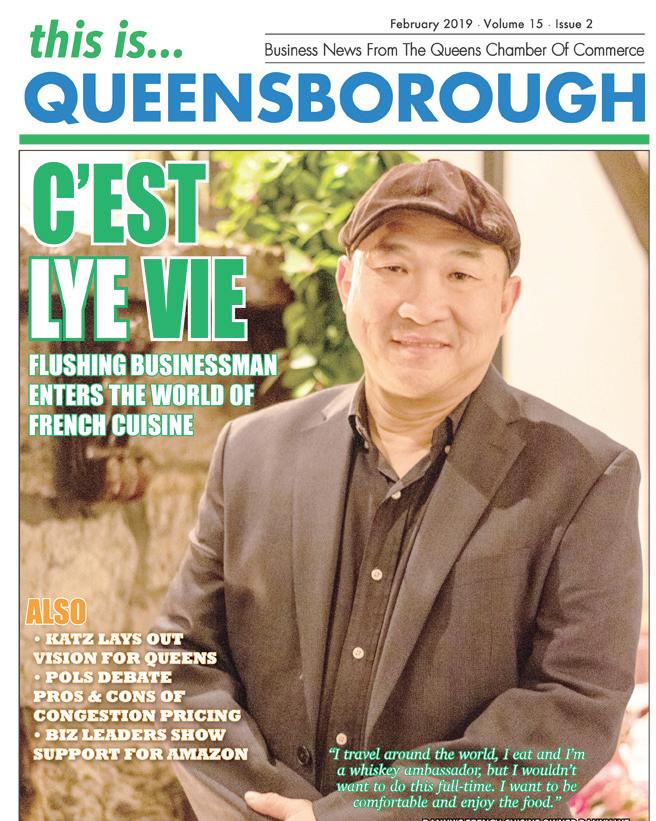
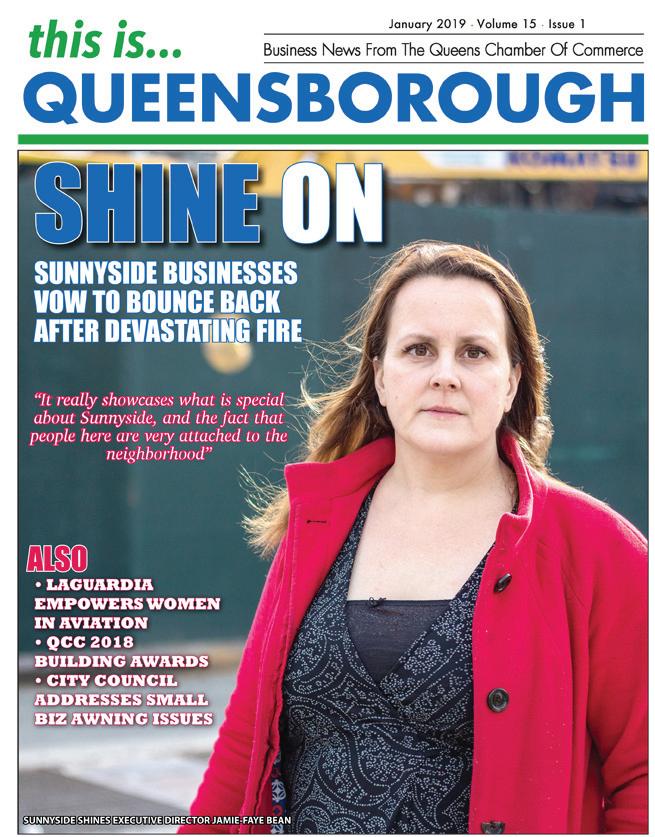

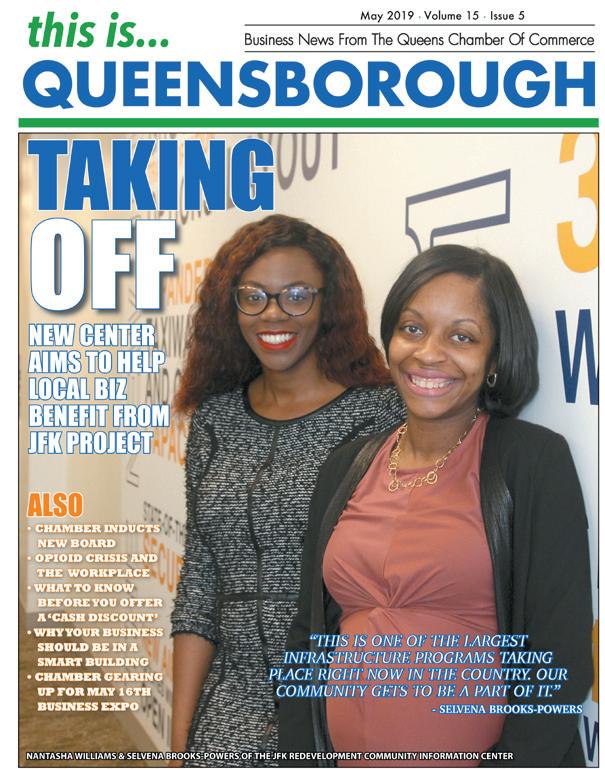
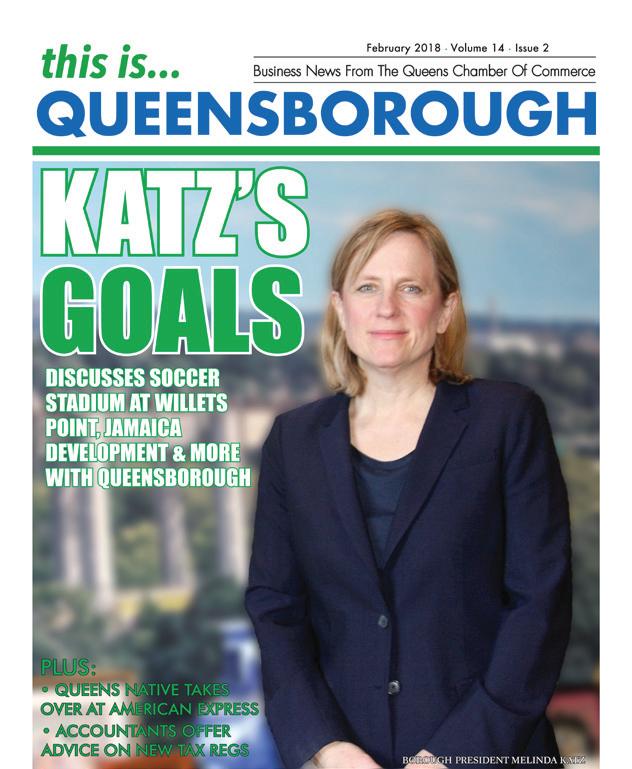
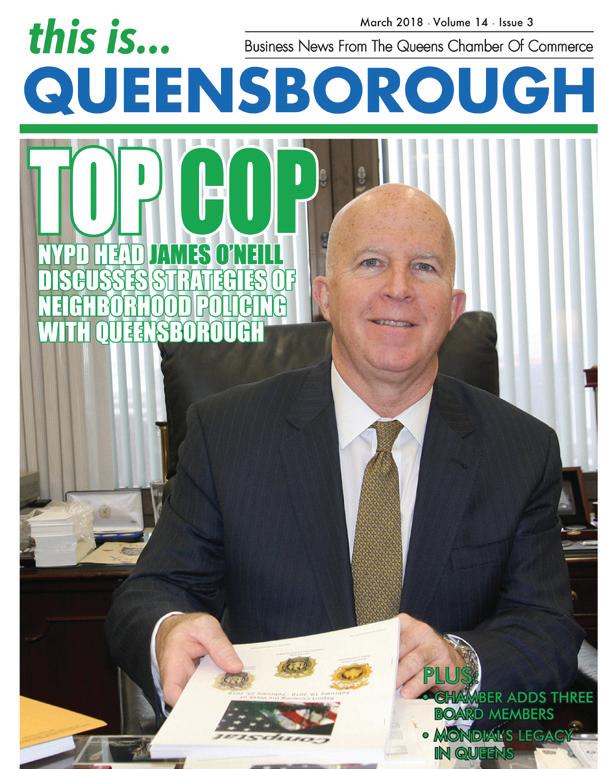
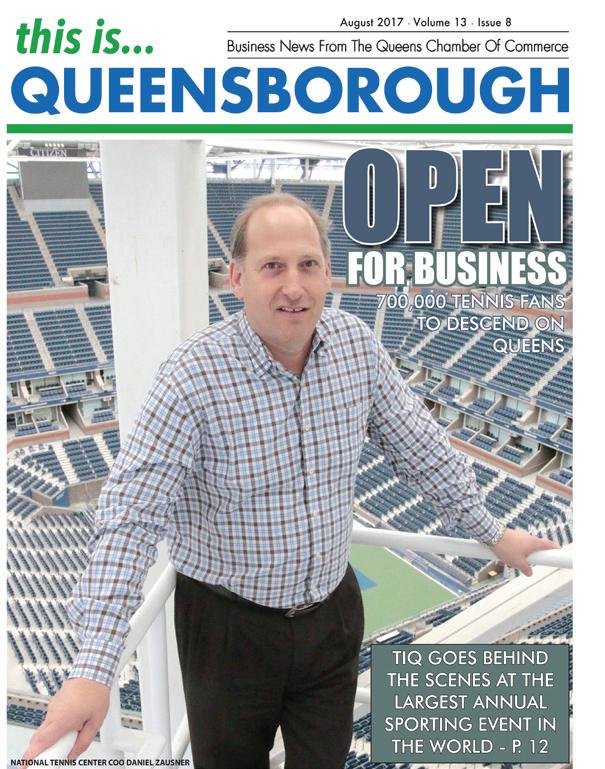
To subscribe to this monthly, glossy magazine, visit thisisqueensborough.com or call BQE Media at 718-426-7200.
To place an ad, call BQE Media at 718-426-7200.
QUEENS CHAMBER MEMBER NEWS
METS HOST FIRST BLOOD DRIVE OF 2020
“WHERE ELSE CAN YOU SAY THAT YOU HELPED SAVE THREE LIVES IN 15 MINUTES?” - DOREEN FISCINA BY SARA KREVOY
January is National Blood Donor Month, and the New York Mets are doing their part to increase the state’s blood supply.
On January 8, the Mets hosted the first of its semi-annual blood drives co-sponsored in conjunction with the New York Blood Center (NYBC).
Amassing 536 pints of blood at Citi Field last week, the winter drive consistently remains one of NYBC’s biggest over nearly two decades in which it maintains a partnership with the Mets.
The event comes at a critical time of year for NYBC (and all organizations that collect blood donations), as seasonal factors like holidays, vacations and weather conditions contribute to diminishing blood reserves nationwide.
This year, donors to the drive received a voucher for a pair of Mets home game tickets. NYBC also rewards its donors with a system that allows them to accrue points redeemable for gifts, as well as charitable donations in their name.
“People are giving part of their lives, and we’re kind of compensating them for that in a small way,” said Armando Echeverry, who oversees much of NYBC activity in Queens.
His job involves speaking at local institutions like colleges, high schools and churches about the importance of donating blood.
Though some potential donors may be deterred by a fear of needles, Echeverry says that the returns from contributing to a blood drive are far greater than any pinch on one’s arm, and that most people don’t come just for the prizes.
“I thought I would feel weird after, but I actually feel better,” Allan Ustoyev said while hooked up to an Alyx machine, a system that collects two donations of red blood cells at once. “There’s joy and comfort that you feel when you help somebody.”
A resident of Forest Hills, Ustoyev first began donating blood more than ten years ago when his high school hosted a blood drive. Since then, he has given blood a total of six times.
Ustaev has Type O negative blood, a type that is always in high demand because it can be used for any patient.
Ustaev and donors like him of all blood types, play an imperative role in maintaining a necessary inventory of 2,000 units of blood daily for hospital patients in the New York and New Jersey area, a count that does not include the additional supply needed for emergency/trauma situations that occur.
One unit is equivalent to one donation, and the average patient receives a minimum of two units.
“It’s almost like instant gratification,” said Doreen Fiscina, NYBC’s account manager for the Mets. “Because you know that three days from today that blood is going to be in an area hospital helping somebody who is in need of it.”
Fiscina explains that after the drive, the donated blood travels to a NYBC lab in Long Island City or Westbury where it is tested, typed and screened. The donation is then separated into platelets, plasma and red cells. Once the blood is deemed safe for use, it is distributed as per the necessity of individual hospitals.
“Where else can you say that you helped save three lives in 15 minutes?” she added.
NYBC supplies blood to nearly 200 hospitals in New York City, Long Island, Hudson Valley and New Jersey, as well as parts of Connecticut and Pennsylvania, and is the exclusive provider for the Northwell and Catholic health systems.
Queens is the most diverse county in the U.S., making the borough an important region for the blood supply.
Certain blood traits and diseases, like sickle cell anemia, are commonly inherited through particular ethnic backgrounds, and so donors from all demographics are needed to facilitate specific matches for recipients.
“It’s not just about collecting blood, it’s also doing research,” Echeverry clarified. “Something that people don’t realize is that NYBC is one of the major resource centers worldwide.”
As one of the nation’s largest community-based blood centers, the nonprofit is a part of the effort to find cures for cancer and other diseases, including developing a safe and affordable Hepatitis B vaccine.
NYBC is home to the Lindsley F. Kimball Research Institute, as well as the National Cord Blood Program at the Howard P. Milstein Mr. Met dons a white jacket.
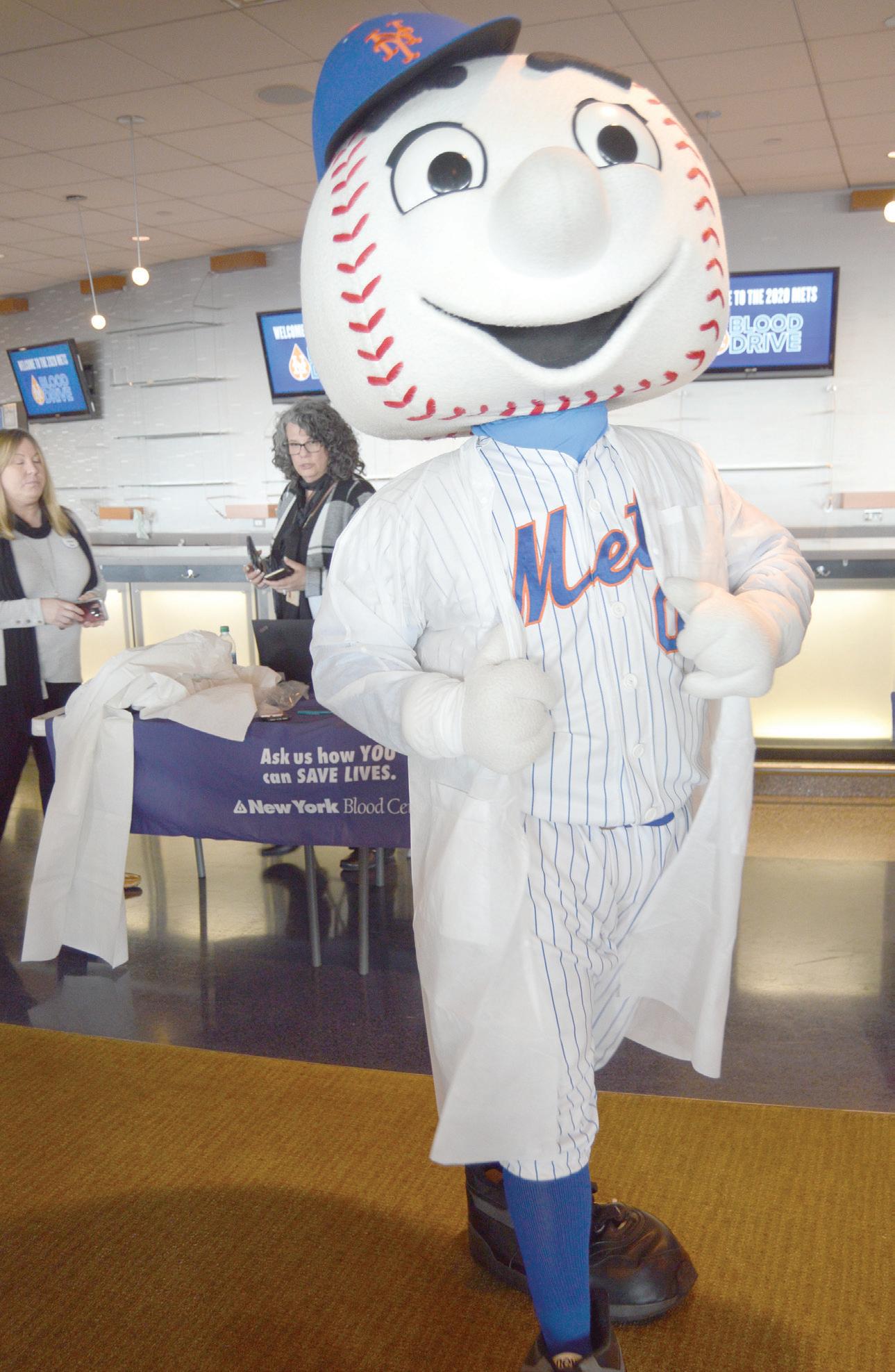
QUEENS CHAMBER MEMBER NEWS
National Cord Blood Center, the world’s largest public cord blood bank.
According to information from the American Red Cross, someone in the U.S. needs blood every two seconds. However, less than 38 percent of the population is actually eligible to donate.
Eligible donors include those at least age 16 (with parental permission), who weigh a minimum of 110 pounds, are in good health and meet all FDA, in addition to State Department of Health, criteria. People over 75 may donate with a doctor’s note.
“The most important takeaway from today is that blood can only come from another human being,” Fiscina emphasized. “It’s the only thing that Amazon Prime can’t deliver.”
The next blood drive at Citi Field will take place on July 15, but potential donors can schedule an appointment for ongoing local drives at nybc.org.

Forest Hills resident Allan Ustoyev gives blood at a donation event hosted at Citi Field.









